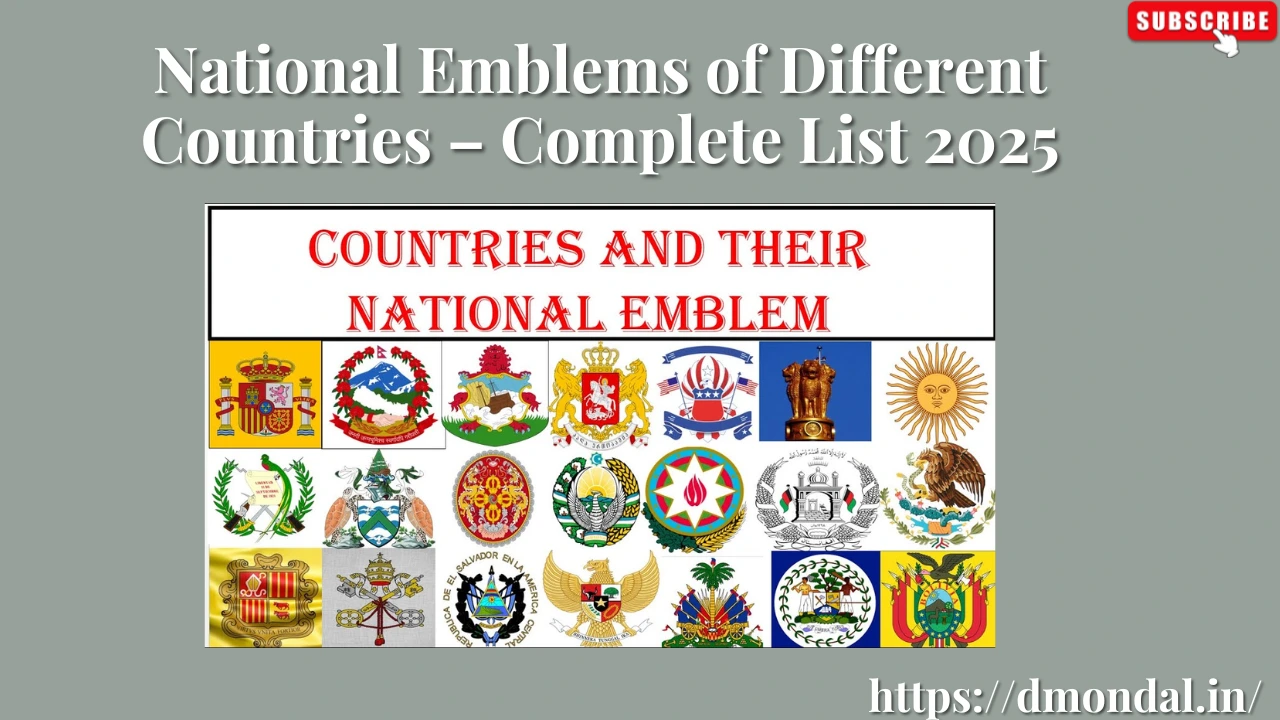National Emblems of Different Countries – Complete List 2025
A national emblem represents a country’s identity, culture, heritage, and values. Unlike a national flag, which is symbolic, an emblem often contains animals, plants, or historical symbols that reflect the nation’s history and principles.
This article provides a comprehensive list of national emblems of different countries for students, quiz enthusiasts, and general knowledge lovers.
🌍 National Emblems of Different Countries
| Country | National Emblem | Key Symbol / Meaning |
|---|---|---|
| India | Lion Capital of Ashoka | Symbolizes power, courage, and confidence; features four lions standing back-to-back. |
| United States | Great Seal of the United States | Bald eagle with shield; represents freedom and democracy. |
| United Kingdom | Royal Coat of Arms | Lion and unicorn; symbolizes monarchy and strength. |
| Canada | Coat of Arms of Canada | Maple leaf, lions, and unicorn; reflects Canadian heritage and unity. |
| China | National Emblem of China | Red circle with Tiananmen Gate, cogwheel, and ears of wheat; represents socialism. |
| Japan | Chrysanthemum Seal | 16-petal chrysanthemum; symbolizes the Imperial family. |
| France | Gallic Rooster | Rooster represents vigilance and courage. |
| Germany | Federal Eagle | Eagle represents sovereignty and strength. |
| Russia | Double-headed Eagle | Historical symbol of unity and power. |
| Australia | Coat of Arms of Australia | Kangaroo and emu support a shield; symbolizes progress and native fauna. |
| Pakistan | Crescent and Star with Wheat | Symbolizes progress, prosperity, and Islamic heritage. |
| Bangladesh | Water lily | National flower with rice sheaves; represents peace and abundance. |
| Nepal | Coat of Arms of Nepal | Includes Mount Everest, national flag, and green hills; symbolizes unity. |
| Sri Lanka | Lion holding sword | Lion represents bravery; sword symbolizes sovereignty. |
| South Africa | Coat of Arms | Includes elephant tusks, protea flower; represents cultural diversity and unity. |
📌 Key Facts About National Emblems
- National emblems are used in official documents, currency, passports, and government buildings.
- They reflect a country’s history, culture, and values.
- Some emblems include animals or plants symbolic of the country’s heritage.
- Emblems differ from national flags, but both represent national identity.
- Learning about emblems is important for students, competitive exams, and general knowledge.
🌟 Importance of National Emblems
- Cultural Identity: Emblems reflect a nation’s traditions, values, and pride.
- Official Use: They are used in documents, government seals, and currency.
- Educational Purpose: Important for students, quiz competitions, and GK preparation.
- Global Recognition: Emblems serve as symbols in international relations and diplomacy.
Read More: Click here
